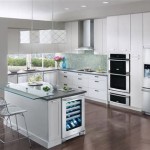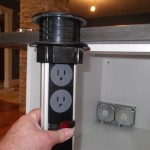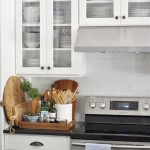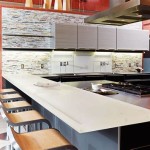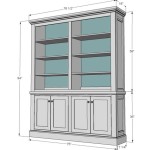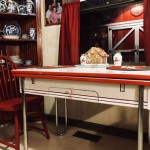What Is the Standard Bar Stool Height for a Kitchen Island?
Choosing the right bar stool height can significantly impact the comfort and functionality of a kitchen island. An improper fit can lead to awkward postures, difficulty eating, and an overall unpleasant experience. This article explores the standard bar stool heights, the factors influencing the ideal height, and tips for measuring to ensure a perfect fit.
Standard Bar Stool Heights
Bar stools typically come in two standard heights: counter height and bar height. Understanding the difference between these two is crucial for making the right selection.
Counter-height stools typically measure 24-26 inches from the floor to the seat. These stools are designed to pair with standard kitchen counters or islands that are approximately 36 inches high.
Bar-height stools measure 28-30 inches from floor to seat and are designed for higher surfaces, typically around 40-42 inches in height. These are more commonly used with raised bar areas or higher kitchen islands.
Factors Influencing Bar Stool Height
Several factors beyond the standard counter and bar heights influence the ideal bar stool height for a particular kitchen island.
The height of the island itself is the primary determinant. Accurate measurement of the island's height is crucial.
The desired legroom is another important factor. A space of approximately 10-12 inches between the seat and the underside of the counter or island is typically recommended for comfortable seating.
Personal preference also plays a role. Some individuals may prefer a more upright seating position, while others may prefer a more relaxed posture. Consider the comfort levels of those who will be using the stools most frequently.
Measuring for the Correct Bar Stool Height
Accurately measuring the height of your kitchen island is essential for selecting the correct bar stool height.
Use a measuring tape to determine the distance from the floor to the top of the island countertop. This measurement represents the island height.
Subtract the desired legroom (typically 10-12 inches) from the island height. The resulting number will give you the approximate ideal bar stool height.
Consider any additional features of the stool, such as footrests, which may influence the overall seating height and comfort.
Different Types of Bar Stools and Their Heights
Beyond the standard counter and bar height stools, there are other variations available to suit different needs and preferences.
Adjustable-height stools offer flexibility and can be adjusted to fit various counter or island heights. These are a versatile option for households with varying counter heights or for accommodating guests of different heights.
Extra-tall bar stools are designed for exceptionally high counters or tables, exceeding the typical bar height. These are less common in residential kitchens but may be found in commercial settings or specialized home bars.
Specialty stools, such as those with backs or arms, may have slightly different height considerations depending on their design. Always check the manufacturer's specifications for specific height recommendations.
Tips for Choosing the Right Bar Stool Height
Selecting the appropriate bar stool height contributes significantly to the overall comfort and functionality of a kitchen island.
Prioritize comfort. Ensure sufficient legroom and a comfortable seating position.
Consider the style and design of the bar stools and how they complement the overall kitchen aesthetic.
Think about the materials and durability of the stools, choosing materials that are easy to clean and maintain.
Test the stools if possible. Sitting on a bar stool before purchasing helps ensure a comfortable fit and allows you to assess the overall quality and stability.
Common Mistakes to Avoid
Avoiding common mistakes can save time and frustration when choosing bar stools.
Failing to measure the island height is a common error. Accurate measurements are essential for selecting the correct stool height.
Not considering legroom can lead to discomfort and an awkward seating position. Always factor in the desired legroom space.
Ignoring the overall style and design of the kitchen can result in bar stools that clash with the existing décor. Choose stools that complement the overall aesthetic.
Overlooking the weight capacity of the stools can be a safety concern. Ensure the stools are appropriate for the intended users.
Importance of Proper Bar Stool Height
Proper bar stool height is critical for a comfortable and enjoyable dining experience at a kitchen island.
Ergonomics play a significant role. Correct posture and support contribute to comfort and prevent strain.
Functionality is also key. The right height allows individuals to eat and socialize comfortably without hunching or straining to reach the countertop.
Aesthetics are also impacted. The right bar stool height contributes to a visually appealing and balanced kitchen design.

Designer Bar Stool Guide Gabriella James

Bar Stool Size Guide What Height And Width Should My Be Lakeland Furniture Blog

Kitchen Island Heights How Tall Should My Be

Guide To Choosing The Right Stool Height Bar Counter Table Stools

Counter Stools Vs Bar Guide Measurement Chart

Kitchen Island Height Guidelines Measurements Explained

Choosing The Correct Bar Overhang Atlantic Ping

Bar Stool Size Guide What Height And Width Should My Be Lakeland Furniture Blog

Diagram Demonstrating The Height Difference Between Kitchen And Commercial Bar Island

Bar Stool Kitchen Counter Guide
Related Posts

